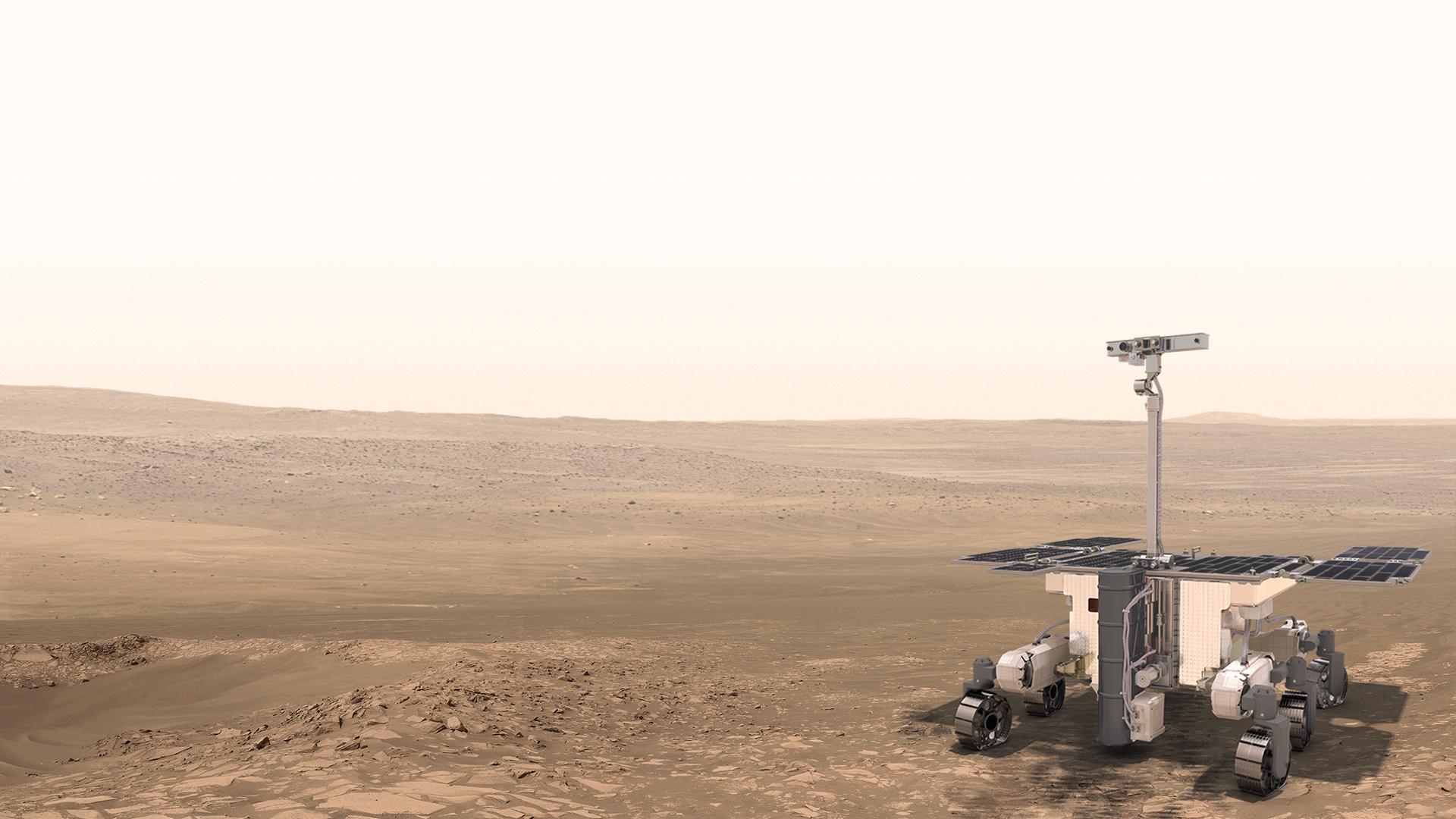Europe will issue new ExoMars lander contract in a few months for beleaguered Mars rover (exclusive)
"This is all in full preparation," ESA chief Josef Aschbacher says.

CAPE CANAVERAL, Fla. — The head of Europe's space agency says a new Red Planet lander is coming for the much-delayed ExoMars mission.
Josef Aschbacher, the director general of the European Space Agency (ESA), says the agency will soon release a contract opportunity to design the ExoMars mission's lander, to replace the Russian one lost when their partnership severed in 2022.
"We will issue a contract for the development of the lander, and this will go out soon, in the next few months or so," Aschbacher told Space.com July 1, hours after the Euclid "dark universe" mission launched here. "This is all in full preparation."
The European Space Agency's Mars mission is now expected to launch no earlier than 2028, eight years past its original expectation. This is due to both technical problems and the loss of Russia following the unsanctioned and internationally condemned invasion of Ukraine last year.
Related: Europe's record-breaking space budget to save beleaguered ExoMars rover
ExoMars was originally set to leave Earth in 2020, but was delayed due to issues with the parachute system for the Russian lander and the pandemic, among other items. Then, when Russia and ESA severed their partnership in early 2022 following Russia's invasion of Ukraine, the Rosalind Franklin rover was left with neither a lander nor a rocket; both were expected to be provided by Russia.
The rover is designed to drill for signs of Martian life much deeper than NASA's Perseverance can reach. It is thought that microbes might be better suited to the Martian underground, where they would be protected from the ultraviolet radiation and solar wind that pummels the Red Planet's surface.
Get the Space.com Newsletter
Breaking space news, the latest updates on rocket launches, skywatching events and more!
To save the mission, ESA representatives recently approved a record-breaking budget of 16.9 billion Euros ($17.6 billion) over three years, which includes 360 million Euros for ExoMars.
NASA may also contribute a braking engine, radioisotope heating units to fight back against the Martian cold and possibly a launcher, Aschbacher said in news reports last November. (ESA prefers to use European rockets where possible, however.)
The White House's 2024 budget request, released in March 2023, included mention of a NASA contribution to ExoMars with no specific amounts allocated. Aschbacher told Space.com on July 1 that the latest he's heard is that negotiations are ongoing. ESA, he said, is hoping for "a small amount" of money from NASA.
The multi-mission ExoMars also includes the Trace Gas Orbiter (TGO), which launched to Mars in 2016. Its goal is to search for less abundant compounds in the carbon dioxide-heavy Mars atmosphere, including methane (which may signal life or not, depending on the process that created it).
TGO also brought a demonstrator mission to Mars called the Schiaparelli Entry, Descent and Landing Demonstrator Module (EDM), which crashed upon landing.
Elizabeth Howell was in Florida to cover Euclid's launch under co-sponsorship by Canadian Geographic magazine and Canada's University of Waterloo. Space.com has independent control of its news coverage.
Join our Space Forums to keep talking space on the latest missions, night sky and more! And if you have a news tip, correction or comment, let us know at: community@space.com.

Elizabeth Howell (she/her), Ph.D., was a staff writer in the spaceflight channel between 2022 and 2024 specializing in Canadian space news. She was contributing writer for Space.com for 10 years from 2012 to 2024. Elizabeth's reporting includes multiple exclusives with the White House, leading world coverage about a lost-and-found space tomato on the International Space Station, witnessing five human spaceflight launches on two continents, flying parabolic, working inside a spacesuit, and participating in a simulated Mars mission. Her latest book, "Why Am I Taller?" (ECW Press, 2022) is co-written with astronaut Dave Williams.










